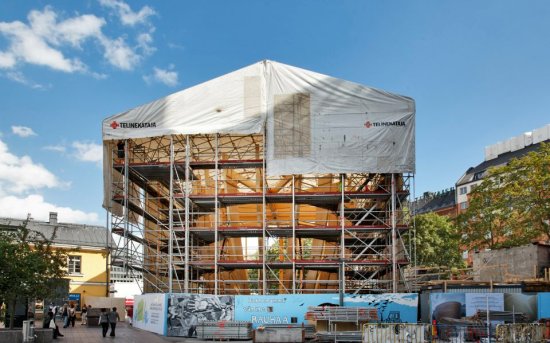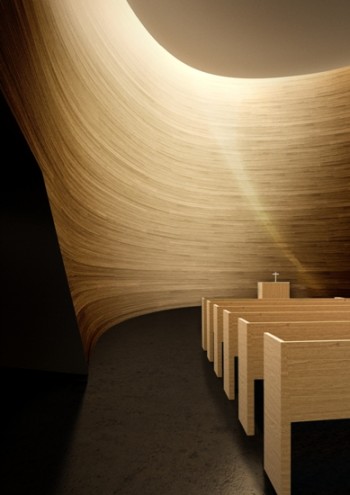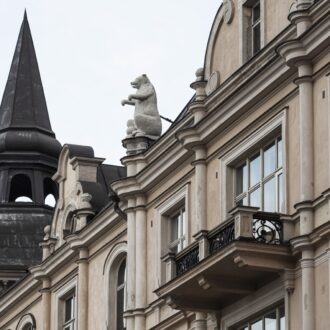A pedestrian hurrying through the bustle of downtown Helsinki suddenly feels drawn to a round, wooden structure on Simonkatu. Inside the building, a contemplative calm reigns. Welcome to the Chapel of Silence.
The parishes of Helsinki are running the Chapel of Silence together with the Social Services Department. It was completed in time to form a highly visible part of Helsinki’s year as World Design Capital in 2012.
Seven church representatives and four social workers contribute to caring for the spiritual needs of anyone who ventures into the chapel.
Anatomy and soul

The skeleton of the Chapel of Silence took shape in 2011.Photo: Chapel of Silence
In 2008, architecture studio K2S won a competition held by the City Planning Department to construct the chapel in Kamppi; work commenced in 2011. “The architectural vision is based on the theme of calmness,” says head architect Mikko Summanen.
“We didn’t want the outside world to intrude inside the chapel. Visitors can concentrate on what is essential. The atmosphere is important. It’s governed by form and material – fir and black alder – and by light, which create the sacral ambience together.
Beauty opens the soul to religious and spiritual experiences. “I hope that the chapel will sensitise people to see beauty and kindness”, says pastor Tarja Jalli, executive director of the Chapel of Silence. “What’s more, I hope that people will start taking responsibility on the conservation and increase of the beauty of life.”
The wood of the chapel stands out from the stone, metal and glass of a hotel and a shopping centre nearby. “The exterior architecture of the chapel is consciously designed to form a great contrast with the surrounding buildings,” explains Summanen. “It has to possess a strong identity to hold its own in this large-scale, commercial, urban landscape. The shape and material of the building communicate different values.”
Yet the activity of the chapel doesn’t clash with the life of the surrounding area. “The chapel forms part of the big community of the neighbourhood of Kamppi,” says Jalli. It forms a link that “completes the comprehensive interpersonal encounters and services for people.” In other words, if chapel visitors leave feeling better or more peaceful, it makes a contribution to the overall atmosphere of the neighbourhood.
Service design for life values

Inner sanctuary: The chapel offers quiet refuge.Photo: © K2S Architects Ltd
Churches are soothing places where connecting with the core of our being feels natural. This is not only a matter of what religion you follow, if any, but also of mental and emotional hygiene. At some time, everyone needs a break from the hurly-burly of everyday life.
The Chapel of Silence offers a sanctuary for listening to the voice of your soul – or for just contemplating the beauty of the building’s interior, which holds pews that can seat up to 70 people.
“We have tried to create an intimate yet sublime atmosphere,” Summanen says. “But the way each visitor experiences the space and the atmosphere is very personal.”
Since the Chapel of Silence began to take shape beside Narinkka Square, its stunning wooden presence has attracted the attention of the thousands of people who pass it daily. What the chapel really offers the public is a beautifully designed service to improve spiritual wellbeing.
While the world outside has become increasingly focused on material values, people can find human and divine warmth and stillness inside the chapel – a moment to stop and listen to something that may be no louder than a whisper.
By Laila Escartín-Sorjonen, March 2012, updated April 2014



